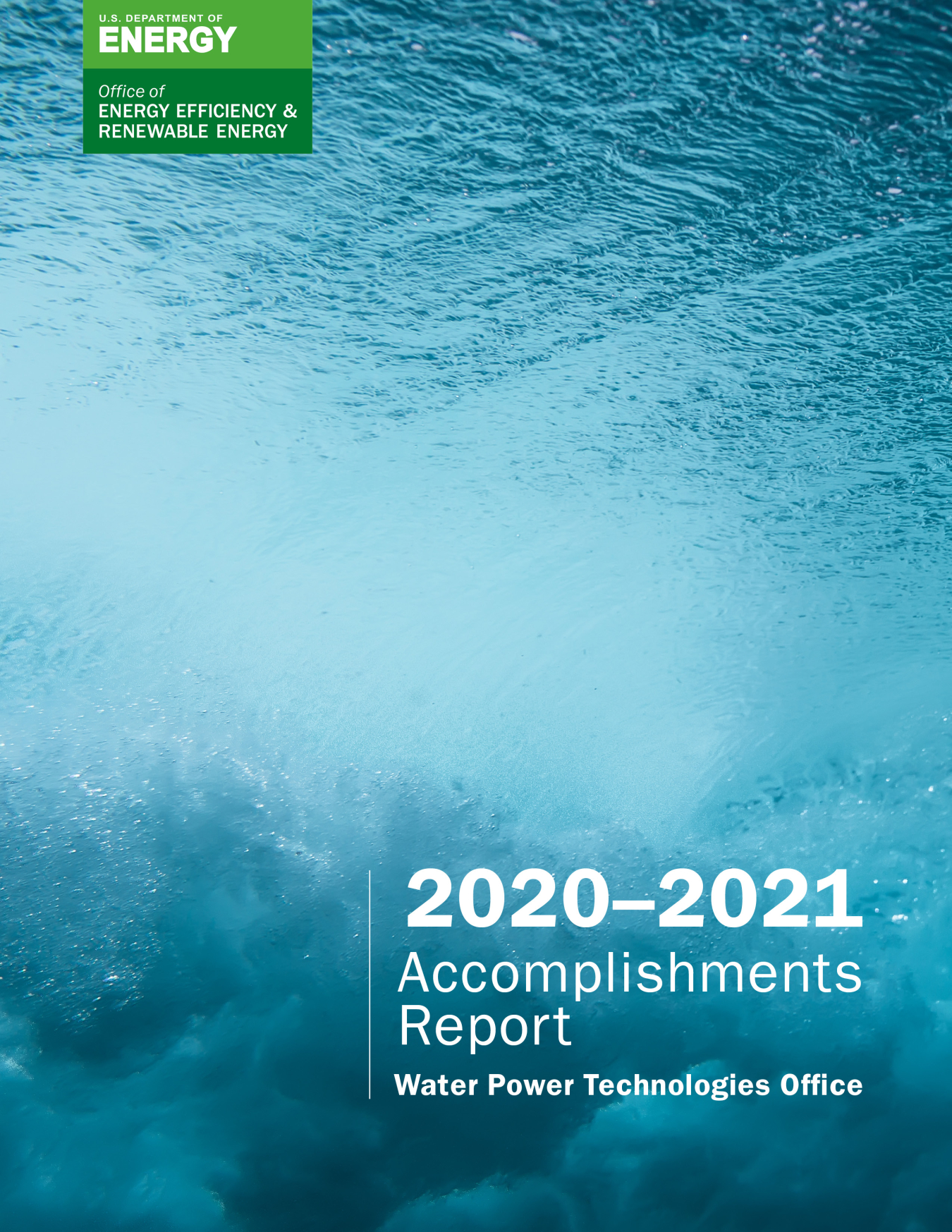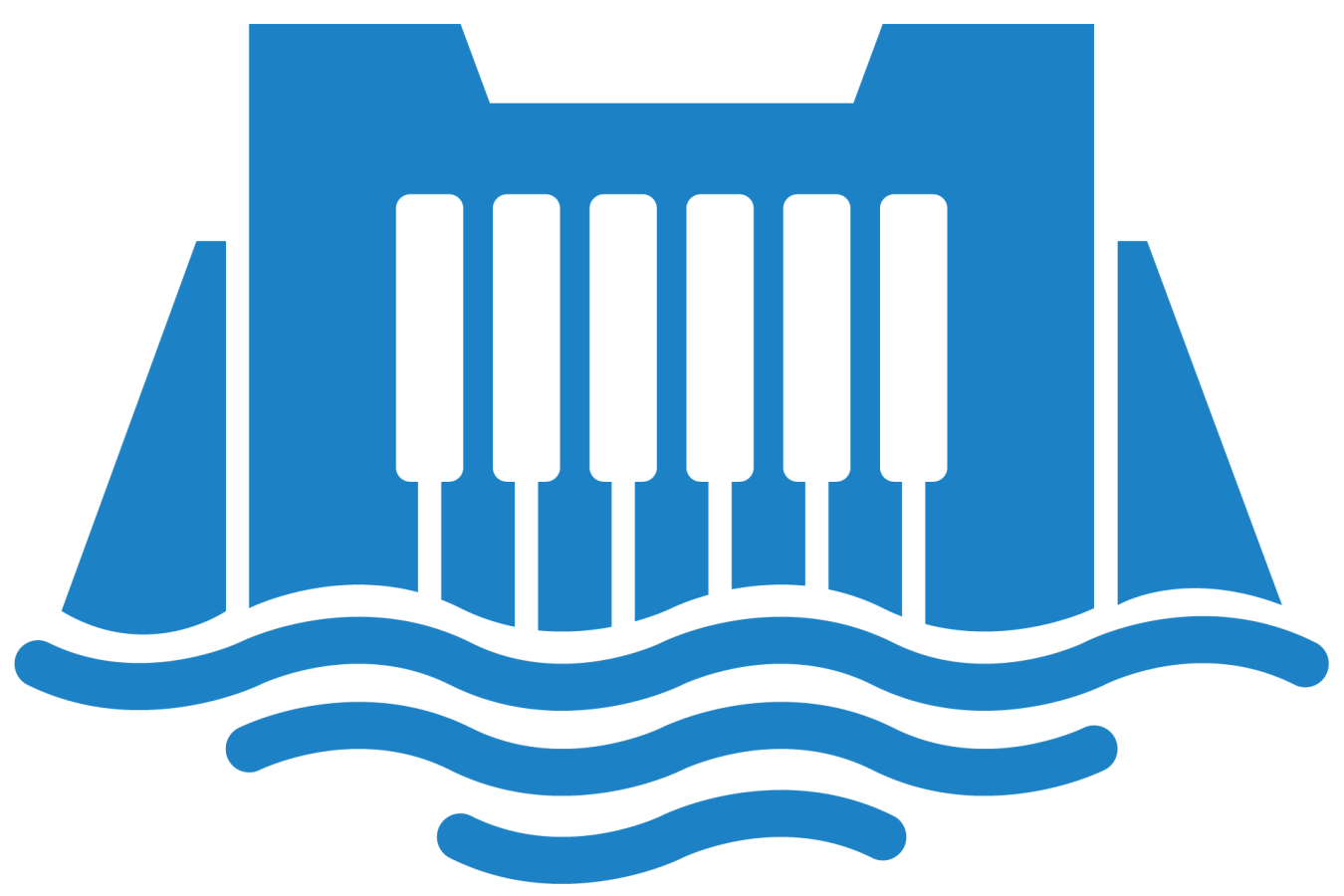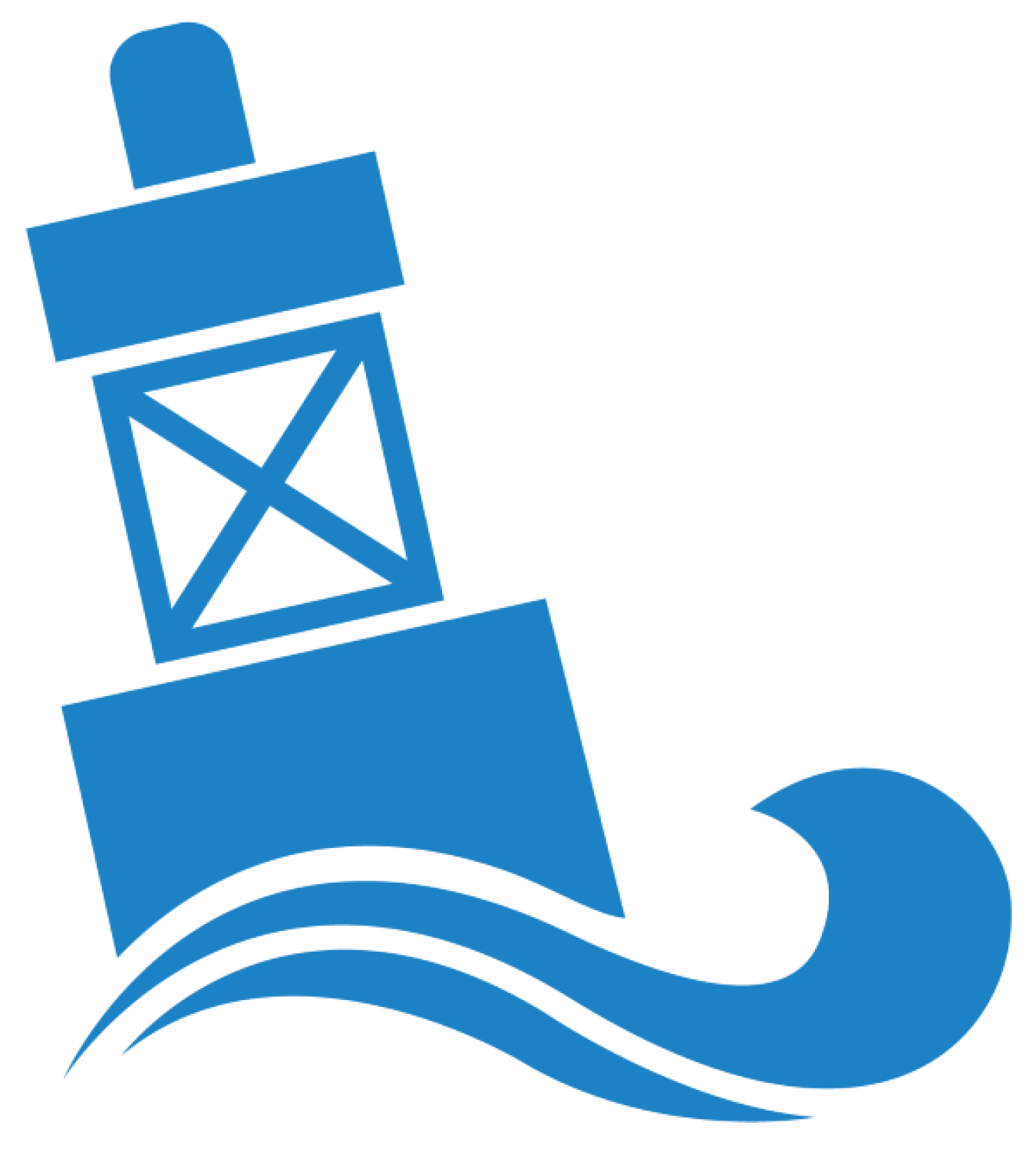In 2020 and 2021, the U.S. Department of Energy’s (DOE) Water Power Technologies Office (WPTO) advanced hydropower and marine energy technologies to help realize water power’s full potential to contribute to a clean energy future.
Letter from the Office of Energy Efficiency and Renewable Energy (EERE) Principal Deputy Assistant Secretary Kelly Speakes-Backman
It has been an exciting year at DOE and in WPTO. Partners across the country led and supported dozens of WPTO-funded research, development, and demonstration projects, contributing to crucial efforts to address climate change and transition our energy system. The hydropower and marine energy industries have essential roles in achieving the Biden administration’s goals of creating a carbon-free power sector by 2035 and a net-zero-emissions economy by 2050.
Letter from the Water Power Technologies Office Director Jennifer Garson
On behalf of WPTO, I am pleased to present our 2020–2021 Accomplishments Report. This report highlights numerous achievements and results from WPTO-supported research across our Hydropower and Marine Energy programs, including new tools and resources for project developers, numerous in-water deployments of emerging technologies, and engaging science, technology, engineering, and math outreach efforts.
Hydropower Program
Hydropower, which uses the flow of moving water to generate electricity, is one of the oldest and largest sources of renewable energy. In 2020, it accounted for more than 7% of U.S. electricity generation and nearly 37% of U.S. renewable electricity generation. Meanwhile, pumped storage hydropower remains the largest contributor to U.S. energy storage with an installed capacity of 21.9 gigawatts, which accounts for 93% of utility-scale energy storage capacity in the United States.
WPTO's Hydropower Program conducts R&D and applied science to advance transformative, cost-effective, reliable, and environmentally sustainable hydropower and pumped storage technologies; better understand and capitalize on opportunities for these technologies to support the nation’s rapidly evolving grid; and improve energy-water infrastructure and security. The program’s vision is a U.S. hydropower and pumped storage industry that modernizes and safely maintains existing assets, responsibly develops new low-impact hydropower, promotes environmental sustainability, and supports grid reliability, integration of other energy resources, and energy-water systems resilience.
To achieve this mission and vision, the Hydropower Program comprises five R&D activity areas, which represent the program’s strategic approach to addressing the challenges facing U.S. hydropower stakeholders. Success stories in the WPTO 2020–2021 Accomplishments Report are presented within these activity areas:
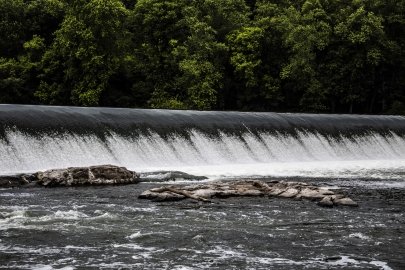 Upstream Tech used machine learning and satellite data to develop more accurate streamflow forecasts that will help hydropower developers and regulators make more informed decisions about future hydropower projects and operations.
Upstream Tech used machine learning and satellite data to develop more accurate streamflow forecasts that will help hydropower developers and regulators make more informed decisions about future hydropower projects and operations. With support from partners, the U.S. Department of Energy’s I AM Hydro Prize awarded $175,000 in cash prizes to 11 teams for their novel concepts to apply new advanced manufacturing techniques for hydropower.
With support from partners, the U.S. Department of Energy’s I AM Hydro Prize awarded $175,000 in cash prizes to 11 teams for their novel concepts to apply new advanced manufacturing techniques for hydropower.
 To support irrigation districts in upgrading outdated systems, national laboratory researchers developed a tool that provides system designs for districts to understand the benefits of hydropower to decarbonize agriculture.
To support irrigation districts in upgrading outdated systems, national laboratory researchers developed a tool that provides system designs for districts to understand the benefits of hydropower to decarbonize agriculture. Natel Energy conducted fish passage tests with its Restoration Hydropower Turbine and found a 100% survival rate for adult rainbow trout and American eels.
Natel Energy conducted fish passage tests with its Restoration Hydropower Turbine and found a 100% survival rate for adult rainbow trout and American eels.
 Researchers at ORNL released updated cost estimates for non-powered dam projects in the United States to help save stakeholders time, effort, and money when assessing potential projects.
Researchers at ORNL released updated cost estimates for non-powered dam projects in the United States to help save stakeholders time, effort, and money when assessing potential projects. Two teams win the Groundbreaking Hydro Prize for developing cutting-edge concepts to lower costs and development timelines associated with building foundations for new hydropower projects.
Two teams win the Groundbreaking Hydro Prize for developing cutting-edge concepts to lower costs and development timelines associated with building foundations for new hydropower projects.
 The Integrated Water Power Resilience Project, a collaborative effort between two national laboratories, led to the development of tools and resources that will help researchers create more resilient water power systems.
The Integrated Water Power Resilience Project, a collaborative effort between two national laboratories, led to the development of tools and resources that will help researchers create more resilient water power systems.
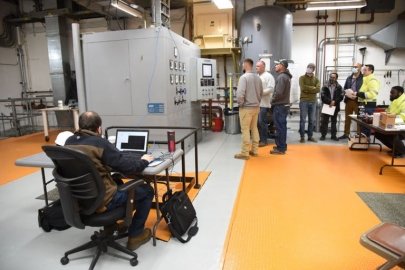 National laboratories and local utility demonstrate how small hydropower and energy storage technologies can provide emergency power to communities during regional grid disruptions.
National laboratories and local utility demonstrate how small hydropower and energy storage technologies can provide emergency power to communities during regional grid disruptions. National laboratory team details approaches and develops a tool for developers and other stakeholders to value a full range of pumped storage hydropower services and contributions to the grid.
National laboratory team details approaches and develops a tool for developers and other stakeholders to value a full range of pumped storage hydropower services and contributions to the grid.
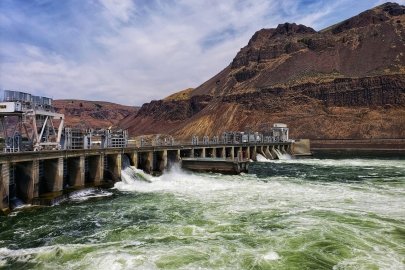 WPTO partners with General Electric to learn how pumped storage hydropower can accelerate the transition to a clean energy economy while helping to reduce local electricity costs.
WPTO partners with General Electric to learn how pumped storage hydropower can accelerate the transition to a clean energy economy while helping to reduce local electricity costs. Researchers develop a report quantifying hydropower’s contributions to grid resilience and release an accompanying framework and toolkit to allow stakeholders to assess hydropower’s role under various extreme grid conditions.
Researchers develop a report quantifying hydropower’s contributions to grid resilience and release an accompanying framework and toolkit to allow stakeholders to assess hydropower’s role under various extreme grid conditions.
 Oak Ridge National Laboratory creates a centralized dataset that provides an overview of available resources at hydropower facilities and their energy storage potential.
Oak Ridge National Laboratory creates a centralized dataset that provides an overview of available resources at hydropower facilities and their energy storage potential. National laboratories develop report outlining ways to improve plant models to better represent hydropower’s capability to support the electric grid.
National laboratories develop report outlining ways to improve plant models to better represent hydropower’s capability to support the electric grid.
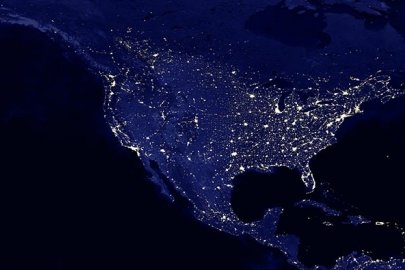 Study reveals how cross-continental integration of large amounts of wind, solar, and hydropower could support a low-carbon future grid and quantifies system benefit of hydropower flexibility.
Study reveals how cross-continental integration of large amounts of wind, solar, and hydropower could support a low-carbon future grid and quantifies system benefit of hydropower flexibility.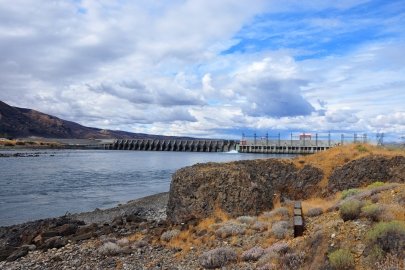 National laboratories contribute to International Energy Agency report on the unique role hydropower plays in service to power systems around the world.
National laboratories contribute to International Energy Agency report on the unique role hydropower plays in service to power systems around the world.
 Pacific Northwest National Laboratory partners with the International Forum on Pumped Storage Hydropower to develop a series of reports on pumped storage hydropower capabilities, costs, and innovations.
Pacific Northwest National Laboratory partners with the International Forum on Pumped Storage Hydropower to develop a series of reports on pumped storage hydropower capabilities, costs, and innovations.
 Oak Ridge National Laboratory and Pacific Northwest National Laboratory partner to create the framework for a digital representation of hydropower systems to inform plant operations and decision making.
Oak Ridge National Laboratory and Pacific Northwest National Laboratory partner to create the framework for a digital representation of hydropower systems to inform plant operations and decision making.
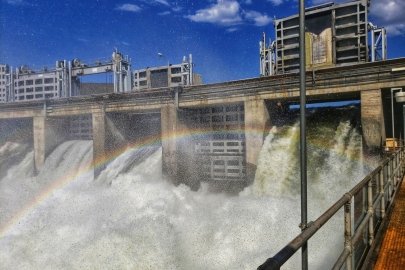 The research team behind the HydroPASSAGE project worked directly with users to enhance the utility of two toolsets and ensure the adoption of tools to support environmental and operational decision making.
The research team behind the HydroPASSAGE project worked directly with users to enhance the utility of two toolsets and ensure the adoption of tools to support environmental and operational decision making.
 New report evaluates and quantifies factors that affect the time, costs, risks, and uncertainties to license or relicense hydropower projects.
New report evaluates and quantifies factors that affect the time, costs, risks, and uncertainties to license or relicense hydropower projects. The National Renewable Energy Laboratory and several educational nonprofits develop new hydropower curricula and teacher training to help cultivate the next generation of the hydropower workforce.
The National Renewable Energy Laboratory and several educational nonprofits develop new hydropower curricula and teacher training to help cultivate the next generation of the hydropower workforce.
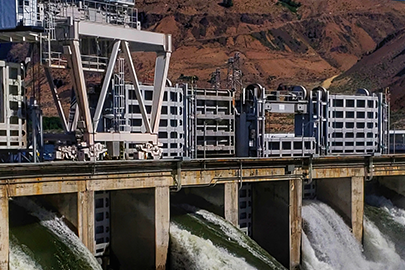 HydroSource, an online platform developed by ORNL to house hydropower data, makes significant improvements and implements new datasets, tools, and other resources for hydropower researchers and decision makers.
HydroSource, an online platform developed by ORNL to house hydropower data, makes significant improvements and implements new datasets, tools, and other resources for hydropower researchers and decision makers. New tool provides environmental and energy stakeholders with a systematic and transparent method for identifying the potential environmental impacts of a hydropower project.
New tool provides environmental and energy stakeholders with a systematic and transparent method for identifying the potential environmental impacts of a hydropower project.
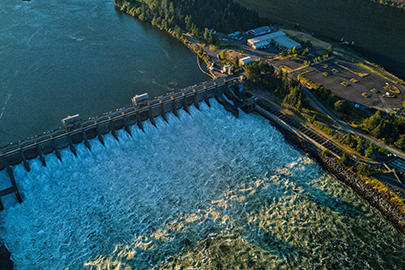 Newly compiled “data stories” from river basins across the United States highlight the importance of accessible and usable water data to inform decision-making processes.
Newly compiled “data stories” from river basins across the United States highlight the importance of accessible and usable water data to inform decision-making processes.
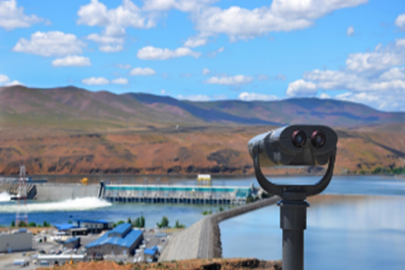 WPTO to provide technical assistance from two national laboratories for Great River Hydro, Idaho Power Company, and Energy Exemplar projects aimed at advancing understanding of how hydropower can most effectively support an evolving power system.
WPTO to provide technical assistance from two national laboratories for Great River Hydro, Idaho Power Company, and Energy Exemplar projects aimed at advancing understanding of how hydropower can most effectively support an evolving power system.
Marine Energy Program
Marine energy resources—such as wave, tidal, and ocean and river currents—are abundant, geologically diverse, energy dense, predictable, and complementary to other renewable energy sources. Marine energy technologies are at an early stage of development because of the fundamental challenges of generating power from a dynamic, low-velocity, and high-density resource while withstanding corrosive marine environments. High costs and lengthy permitting processes associated with in-water testing intensify these challenges.
WPTO's Marine Energy Program (formerly the Marine and Hydrokinetics Program) conducts transformative research that advances the development of reliable, cost-competitive marine energy technologies and reduces barriers to deployment. The program’s vision is a U.S. marine energy industry that expands and diversifies the nation’s energy portfolio by responsibly delivering power from ocean and river resources.
To achieve this mission and vision, the Marine Energy Program comprises four core R&D activity areas and one initiative, which represent the program’s strategic approach to addressing the challenges facing U.S. marine energy stakeholders. Success stories in the WPTO 2020–2021 Accomplishments Report are presented within these areas:
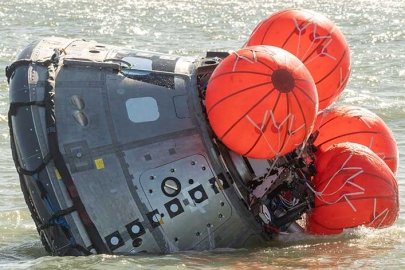 Open-Source Wave Energy WEC-Sim Software Receives R&D 100 Award and Contributes to Space ExplorationThe open-source WEC-Sim software is recognized with a 2021 R&D 100 Award, while researchers at NASA and Lockheed Martin apply the software to help ensure the safety of the future crew of the Artemis I mission.
Open-Source Wave Energy WEC-Sim Software Receives R&D 100 Award and Contributes to Space ExplorationThe open-source WEC-Sim software is recognized with a 2021 R&D 100 Award, while researchers at NASA and Lockheed Martin apply the software to help ensure the safety of the future crew of the Artemis I mission.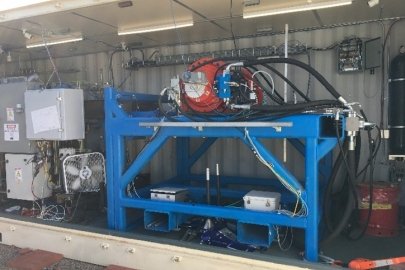 Sandia Wave Energy Power Take-Off Lab provides its first simulations for an industry partner, AquaHarmonics, leveraging its unique capabilities to evaluate performance on the wave energy converter device in advance of open-ocean testing in Hawaii.
Sandia Wave Energy Power Take-Off Lab provides its first simulations for an industry partner, AquaHarmonics, leveraging its unique capabilities to evaluate performance on the wave energy converter device in advance of open-ocean testing in Hawaii.
 Researchers at the National Renewable Energy Laboratory outfitted the SeaRAY autonomous offshore power system with a customized Modular Ocean Data Acquisition system, which will allow handlers to control the device from afar and collect real-time data.
Researchers at the National Renewable Energy Laboratory outfitted the SeaRAY autonomous offshore power system with a customized Modular Ocean Data Acquisition system, which will allow handlers to control the device from afar and collect real-time data.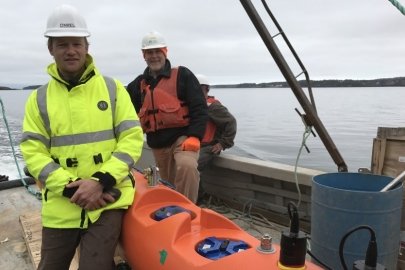 A multilab team of researchers identifies renewable marine energy resource potential and continues to refine these assessments as resources are further developed.
A multilab team of researchers identifies renewable marine energy resource potential and continues to refine these assessments as resources are further developed.
 The Virtual Seedling Water Power Innovation R&D Showcase brought together more than 40 researchers to provide details and insight into innovations funded through the WPTO Seedlings program, a novel effort funding advancements in marine energy.
The Virtual Seedling Water Power Innovation R&D Showcase brought together more than 40 researchers to provide details and insight into innovations funded through the WPTO Seedlings program, a novel effort funding advancements in marine energy.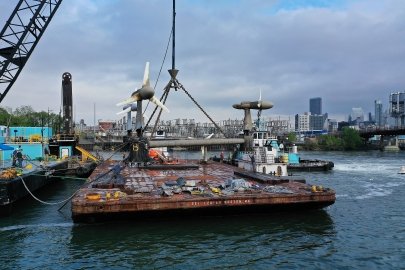 Research demonstrates the potentially game-changing thermoplastic resin material for marine applications at a meaningful scale.
Research demonstrates the potentially game-changing thermoplastic resin material for marine applications at a meaningful scale.
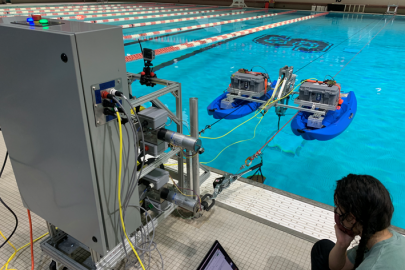 Research team conducts tests to advance a flying underwater kite that could power deep sea research by harnessing and storing clean ocean energy from slow-moving currents.
Research team conducts tests to advance a flying underwater kite that could power deep sea research by harnessing and storing clean ocean energy from slow-moving currents. Team of industry and academic researchers advance the validation of a novel floating oscillating surge wave energy converter at the Stevens Institute of Technology in New Jersey.
Team of industry and academic researchers advance the validation of a novel floating oscillating surge wave energy converter at the Stevens Institute of Technology in New Jersey.
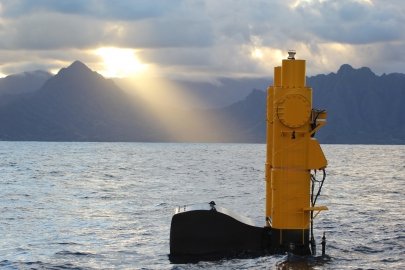 WPTO-supported committee publishes new internationally recognized standards that will pave the way for the most promising marine energy technologies to achieve commercialization.
WPTO-supported committee publishes new internationally recognized standards that will pave the way for the most promising marine energy technologies to achieve commercialization.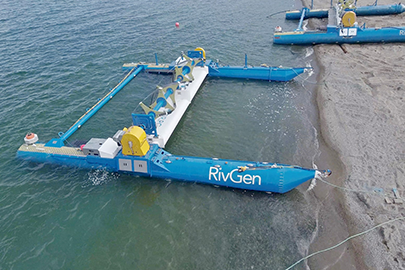 Two deployed river hydrokinetic system help power Igiugig, Alaska, simultaneously reducing diesel dependence and supporting a local workforce.
Two deployed river hydrokinetic system help power Igiugig, Alaska, simultaneously reducing diesel dependence and supporting a local workforce.
 Team conducts in-water demonstrations for a novel “Water Horse” hydrokinetic device that sits above rushing rivers, taking a first step to collect data to analyze its true costs and validate its potential as a reliable, lower-cost source of clean energy.
Team conducts in-water demonstrations for a novel “Water Horse” hydrokinetic device that sits above rushing rivers, taking a first step to collect data to analyze its true costs and validate its potential as a reliable, lower-cost source of clean energy.
 The TEAMER program grew substantially in its second year to 37 requests for technical support in Fiscal Year 2021—and expanded its network from 30 to include more than 90 different capabilities.
The TEAMER program grew substantially in its second year to 37 requests for technical support in Fiscal Year 2021—and expanded its network from 30 to include more than 90 different capabilities.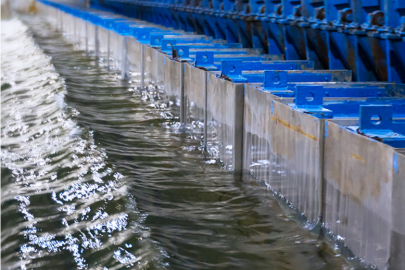 To support the critical step for industry to model and evaluate systems, a multilab team made significant additions to a marine energy data processing software, called MHKiT, to include functions to download and process new types of data.
To support the critical step for industry to model and evaluate systems, a multilab team made significant additions to a marine energy data processing software, called MHKiT, to include functions to download and process new types of data.
- With the first stages of directional drilling nearly complete, land-based construction begins on PacWave South, the United States’ first accredited, grid-connected, open-ocean wave energy testing facility.
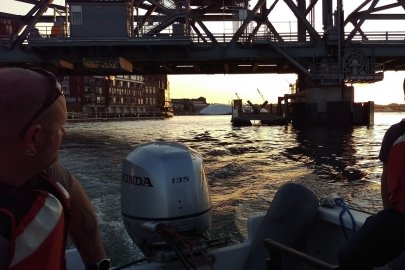 The newly awarded Atlantic Marine Energy Center will provide research and testing capabilities for marine energy, with the awarded coalition focusing on powering the blue economy.
The newly awarded Atlantic Marine Energy Center will provide research and testing capabilities for marine energy, with the awarded coalition focusing on powering the blue economy.
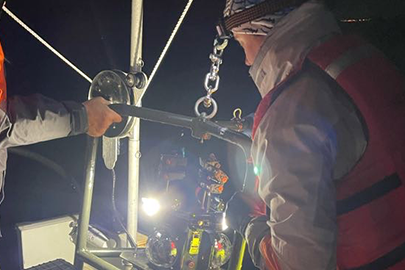 Triton team completes tests to inform recommendations for cost-effective, off-the-shelf technologies and methods for environmental monitoring at marine energy sites.
Triton team completes tests to inform recommendations for cost-effective, off-the-shelf technologies and methods for environmental monitoring at marine energy sites.
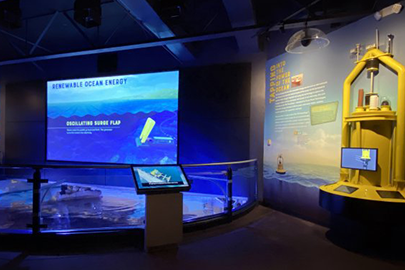 WPTO hosts 17 teams as part of the second Marine Energy Collegiate Competition and expands STEM for Marine Energy Portal resources.
WPTO hosts 17 teams as part of the second Marine Energy Collegiate Competition and expands STEM for Marine Energy Portal resources.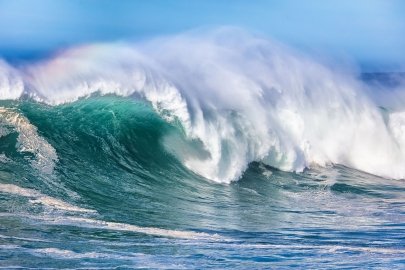 The Portal and Repository for Information on Marine Renewable Energy now features a centralized search engine for marine energy information, and the team launches a lessons-learned documentation effort.
The Portal and Repository for Information on Marine Renewable Energy now features a centralized search engine for marine energy information, and the team launches a lessons-learned documentation effort.
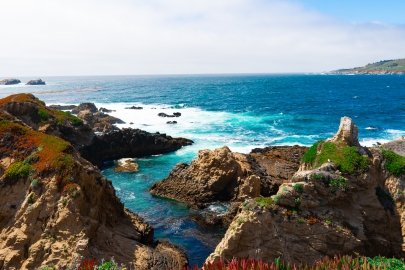 A new online database maps out scientific and regulatory data for marine energy regulators and developers to accelerate and reduce the cost of permitting.
A new online database maps out scientific and regulatory data for marine energy regulators and developers to accelerate and reduce the cost of permitting.
 The Energy Transitions Initiative Partnership Project launched a novel approach to support and work alongside 11 remote, island, and islanded communities to help develop strategies to shift to a clean, equitable, sustainable, and resilient energy future.
The Energy Transitions Initiative Partnership Project launched a novel approach to support and work alongside 11 remote, island, and islanded communities to help develop strategies to shift to a clean, equitable, sustainable, and resilient energy future.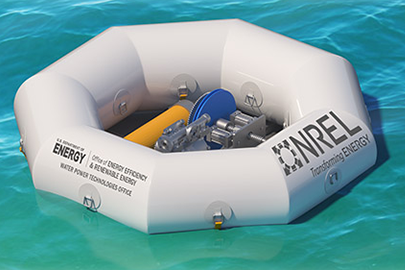 Competitors presented, tested, and evaluated small, modular, cost-competitive desalination systems powered by ocean waves through two rounds of the Waves to Water prize and five concepts earned a chance to compete in the final test in the open water.
Competitors presented, tested, and evaluated small, modular, cost-competitive desalination systems powered by ocean waves through two rounds of the Waves to Water prize and five concepts earned a chance to compete in the final test in the open water.
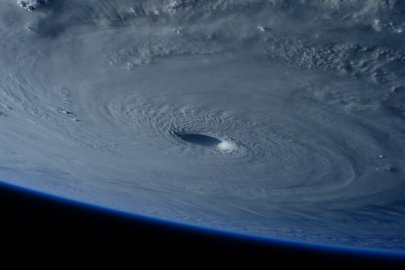 Seven Ocean Observing Prize competitors were selected for their novel approaches to marine energy-powered systems that seek to enable better prediction of hurricane intensity, which marks the winners’ first step in a three-stage contest.
Seven Ocean Observing Prize competitors were selected for their novel approaches to marine energy-powered systems that seek to enable better prediction of hurricane intensity, which marks the winners’ first step in a three-stage contest.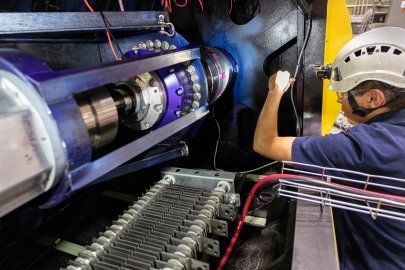 After customer discovery and analysis stemming from the Powering the Blue Economy report, a national lab team focuses on 10 key research areas that are fundamental challenges for marine energy to integrate into high-priority blue economy applications.
After customer discovery and analysis stemming from the Powering the Blue Economy report, a national lab team focuses on 10 key research areas that are fundamental challenges for marine energy to integrate into high-priority blue economy applications.
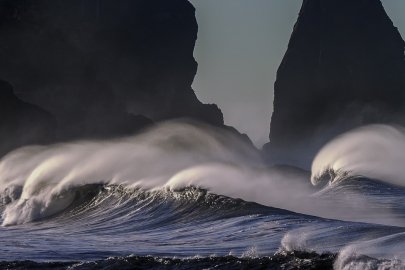 WPTO selected 10 projects to receive funding as part of efforts to support marine energy R&D and testing infrastructure.
WPTO selected 10 projects to receive funding as part of efforts to support marine energy R&D and testing infrastructure.
WPTO's Hydropower e-newsletter features news on R&D and applied science to advance sustainable hydropower and pumped-storage technologies.
WPTO's Marine Energy e-newsletter shares news and updates on tools, analysis, and emerging technologies to advance marine energy.
The WPTO e-newsletter brings funding opportunities, events, publications, hydropower, and marine energy updates directly to your inbox.


